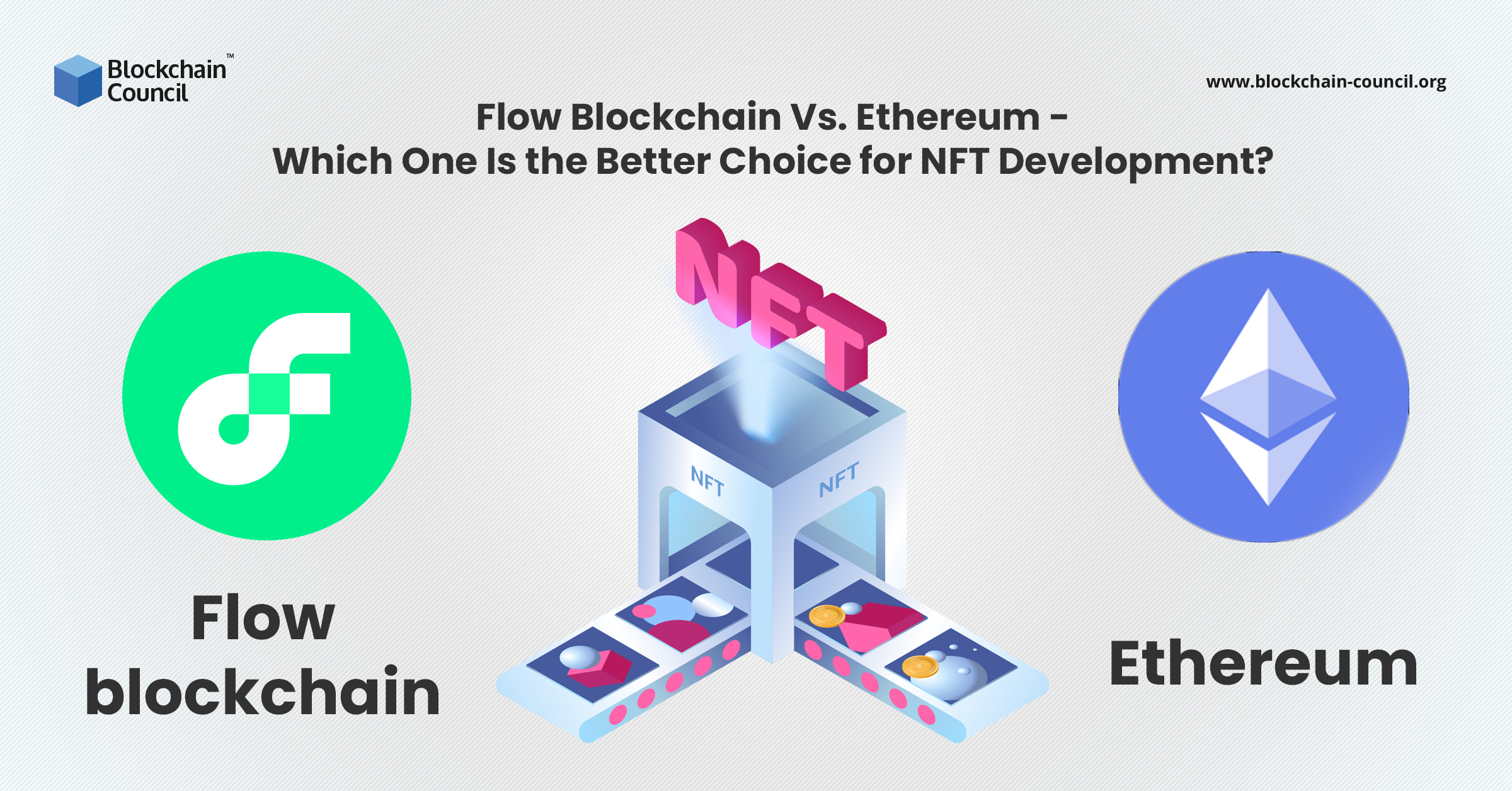
- Blockchain Council
- May 19, 2022

Do you know what the most remarkable thing about blockchain technology is? Confused? Well, don’t be because we have got your back here. Getting back to our question, the most exciting thing about blockchain technology is its endless potential to evolve and grow into something unexpected, unraveled, and unmatched. When Bitcoin came into the big picture, people gave all their attention to the novel idea of paperless currency. But unfortunately, the majority of us failed to look beyond the word Crypto. However, like always, some brightest minds did succeed in looking beyond the covers, only to find the primary catalyst behind the whole idea- ‘Blockchain Technology.’
As the curiosity to explore the potential of blockchain technology gained pace, we found new use-cases for its application across multiple industrial domains. We found blockchain’s unprecedented prowess in supporting essential business operations, which eventually gave the industrial realm a new face. The innovation in blockchain technology paved the way for advanced versions of cryptocurrencies. The most hyped one in this crypto collection is undoubtedly the Non-Fungible Tokens. Referred to as NFTs, these assets are slightly different from the usual virtual assets as they cannot be traded and exchanged for money. NFTs are digital collectibles representing physical assets like artwork, real estate, merchandise, etc. Each NFT is unique, so it cannot be used for financial transactions. However, you can still own, play, and monetize NFTs.
The craze for Non-Fungible Tokens is insane as the list of its fans includes the biggest movie stars, acclaimed singers, and eminent sports players. They have become the most popular means to connect with fans and launch their private collections, eliminating the risks of duplicacy or copyright infringement. Interestingly, most NFT projects form an inevitable part of the dominant Ethereum ecosystem. However, recently, there has been a change in trend as NFT creators are willing to ditch Ethereum for a new promising blockchain venture named Flow. The Flow blockchain is the brainchild of Canada-based firm Dapper Labs, also the proud creator of the viral trading game CryptoKitties.
While both the blockchain networks share perks and limitations, we are here to help you understand this contrast. The content below will lay out the pros and cons of Ethereum and Flow blockchains to help you choose between the two networks. Let’s start our research:
A brief introduction to Ethereum
If you are into crypto, Ethereum must be a regular topic of discussion and consideration for you. Where Bitcoin strives to revamp how the traditional payment system works, Ethereum believes in expanding blockchain technology usage to new verticals. As a result, the decentralized open-source platform launched the smart contracts feature and etched its name as a pioneer in the history of the DLT era.
With Ethereum came a new generation of blockchain technology that looked beyond the payment sector and focused on expanding its capacities to other domains. Ethereum uses its native currency, Ether, to fuel its network. Presently, the token shines as the second-largest crypto asset in terms of market capitalization. In addition, the blockchain channel uses its programming language called Solidity to help developers write smart contracts easily. Solidity is an advanced object-oriented programming language used for writing smart contracts. Developed for the Ethereum Virtual Machine, the language drew its influence from C++, Python, and JavaScript.
The BTC ecosystem works as a P2P currency that uses its native script for smart contract creation on the network. As Ethereum helps to digitize and bring anything of value to the blockchain channel, it soon gained popularity amongst developers. However, the Bitcoin programming language’s complex structure and less flexibility encouraged Ethereum developers to come out with their own platform and a more advanced programming language.
Ethereum is a popular choice for smart contract developers and DApp creators. The portal hosts a plethora of decentralized apps, DeFi solutions, and NFT projects. In addition, the DLT ecosystem offers access to a wide range of tools and services for the crypto community.
A brief introduction to Flow
Launched in 2020 by the creators of the CryptoKitties game, Flow blockchain thrives as a solid competitor for Ethereum. At the time of launch, the popular game worked on Ethereum like most other NFT projects. However, after getting flooded with about 10,000 users, the Ethereum ecosystem crashed and failed to manage the work. This incompetency made the team feel a need to have a separate blockchain. Thus, Dapper Labs launched Flow.
Flow strives as a robust decentralized channel that promises to support DApps involving crypto games and NFTs. Flow offers an infrastructure that helps developers create high-potential apps accessible by billions of users at the heart of its cluster. The native currency of the blockchain is called FLOW, and it serves as the primary catalyst force for the project. The token is the chief reserve asset used for staking, governance, and settling the transaction fees. In addition, developers need to use the official smart contract language on Flow called Cadence.
Cadence is an advanced programming language that involves new features devoted to smart contracts. The resource-oriented language is unique and created to resolve the shortcomings of the present systems. The list of Cadence features includes a robust static ecosystem, in-built pre-and-post conditions for transactions, and dependence on capability-focused security. The programming language drew inspiration from Rust and Swift. With Cadence, developers can design potent DApp projects to change the core industry. This includes solutions helping celebrities connect with their fans or NFTs, unleashing new opportunities for fun and earnings.
Flow vs. Ethereum: A Contrast
After doing a short roundup for Flow and Ethereum, let’s come to the main topic- a contrast between Flow and Ethereum. We will help you understand the differences between the two blockchains based on various parameters. Take a look:
Scalability
Low scalability has always been a tough spot for the crypto sphere. For example, Ethereum can process only 13-15 transactions per second, making it impossible to use for large-scale projects. The team at CryptoKitties realized this limitation when their game became super successful. So, the firm focused on enhancing Flow blockchain’s scalability while ensuring complete decentralization and security.
On the one hand, Ethereum uses sharding to enable horizontal scalability, whereas Flow relies on multi-node infrastructure to facilitate vertical scalability. The nodes are arranged so that the work is divided between them, ensuring speedy execution. The execution nodes do the calculations involved in transactions, while the collection nodes enhance network connectivity and data access for DApps. The node categories help to expand scalability. The verification nodes recheck the work done by the execution nodes, and the consensus nodes decide the order of transactions. They collectively help to ensure the accountability and security of the core system.
The infusion of four distinct node categories helps achieve high-end decentralization and optimal distribution of node operators. In 2019, the Flow prototype managed to process 1,000 transactions per second. The platform is now planning to achieve the target of 10,000 transactions per second.
Transaction Cost
Ethereum makes its users pay a certain amount for performing transactions and executing the smart contract. The charge is called the gas fee and is paid in Ethereum’s native currency, ETH. The average gas charge is $20.
The developers of Flow blockchain wanted to come up with something new in terms of fee charges. So they presented a two-layer fee payment system. The users need to pay two fees, one for creating an account which starts at 0.001 FLOW, and the second is the transaction fee which starts at 0.000001 FLOW.
Consensus Mechanism
Currently, Ethereum uses the PoW or Proof-of-Work consensus algorithm that comes with its own share of merits and demerits. In the PoW setup, miners compete with each other to solve complex problems and build a cryptographic link between the blocks. The one who manages to win this battle earns ETH in return. The process helps to add new blocks to the network which are shared by all the node participants. However, PoW is widely criticized for its excessive energy consumption as it requires a huge amount of computing equipment. To resolve this, Ethereum blockchain developers are planning to shift to the Proof-of-Stake protocol.
On the other hand, Flow blockchain runs on the PoS consensus module. The network uses the HotStuff consensus algorithm developed by VMware Research. In PoS, validators are selected at random for creating new blocks, sharing them with the network participants, and earning rewards. The validators place ETH to take part in the verification process of transactions.
The main difference between the PoW and PoS infrastructure is how the participants fetch profits. In PoS the nodes earn from increasing the value of the currency, whereas in PoW they are interested in increasing the commission. Flow is a potent option for developers who want to capitalize on their NFT projects quickly.
Smart Contracts
Smart contract creation is synonymous with Ethereum. The Ethereum blockchain network is quite popular when it comes to designing applications for multiple uses. One striking feature about these smart contracts is that they cannot be altered after execution. Each transaction performed on top of the channel goes into the blockchain which makes them immutable. This builds trust in Ethereum within the community. However, some developers feel reluctant in using Ethereum smart contracts as they feel that this immutability is flawed. They emphasize that there should be room for changes in smart contracts after deployment to eliminate all sorts of unintended errors.
The Flow blockchain involves the release of smart contracts on its mainnet in a beta format. This gives the original developer of the contract full authority to update the code serially. The participants can opt to use the code in the set format at a particular period of time or wait for the complete version of the code before investing their trust in it. When the smart contract developers feel that the code is secure for work, they need not control it as it becomes immutable.
Digital Account Structure
An Ethereum account involves a private key which is a 64 hexadecimal number. Once the private key is created by the users, mathematical functions are carried on it to fetch the public key. Further, the public key goes through several mathematical operations to secure a valid digital address. The entire process of key generation is one-way and it is impossible to generate a private key from an account address.
In Flow, accounts are created by the network automatically while supporting multiple public keys easily. For creating an account on Flow, it is first necessary to generate public and private key pairs via the ECDSA (Elliptic Curve Digital Signature Algorithm) P-256 or secp256k1 system. With this, new account storage is created and the newly-designed keys are given to the account. Each account can have between 1 and n public keys related to it. There is a private key in the direct possession of the account holder for each public key.
In Ethereum infrastructure, smart contracts are employed in their individual accounts and these accounts do not have a private key. However, Flow facilitates the deployment of multiple smart contracts simultaneously. An Ethereum account can keep a track of all the tokens and smart contracts it has connected with. Though, it does not offer single storage space for account assets in smart contracts. Flow, on the other hand, one can trace all the smart contracts that somehow interacted with the resources.
Vision of Work
The developers involved in the creation of Ethereum strived to come up with a platform that is innovative, diverse, and secure. They wanted to expand the operational capacities of blockchain technology to new domains, fields, and industries. The portal encourages work simplicity, universality, and diversity of usage.
The Flow blockchain creators designed their platform after collecting multiple experiences with other blockchain channels. They analyzed the shortcomings existing in the realm and wanted to draft a solution to encounter them. The developers made an effort to simplify the complexities involved in blockchain so that users can focus on their individual growth. The channel focuses on catering to the requirements of users related to scalability, cost-efficiency, etc. The super success of CryptoKitties and NBA Top Shot clearly showcases the potential of Flow as a substitute for Ethereum.
Conclusion
Ethereum and Flow are one of the most potent platforms for DApp development presently available in the market space. Each comes with its own share of perks and drawbacks when it comes to application development, NFTs, etc. This article made an attempt to help you understand each aspect of both the blockchain ecosystems. By now, after considering all the pros and cons, you must be in a position to make a choice between the two portals. Each project is innovative and unique in its own way and so it entirely depends on your preferences to select either of them.
The crypto space is a dynamic cluster that largely depends on market trends and patterns. As the industry is comparatively new, one might find difficulty in understanding the basic concepts involved therein. For them, Blockchain Council offers a variety of blockchain certifications and blockchain courses providing subjective and practical knowledge to crypto fans.





































































 Guides
Guides News
News Blockchain
Blockchain Cryptocurrency
& Digital Assets
Cryptocurrency
& Digital Assets Web3
Web3 Metaverse & NFTs
Metaverse & NFTs
